第19章 HOW LIBRARY WORK WITH CHILDREN HAS GROWN IN HARTFO
Within a short time,in 1878,we began to publish a quarterly bulletin.In the first number "Library notes"begins:"Much time and thought have been given to suggesting in this bulletin good books for boys and girls.As a rule,they read too much.Our accounts show that one boy has taken 102story-books in six months,and one girl 112novels in the same time.One book a week is certainly enough,with school studies.Within the last month one boy has asked us for Jack Harkaway's stories,another for bound volumes of the Police News,and a third for 'The murderer and the fortune teller,''The two sisters and the avenger'and 'The model town and the detective.'These are not in the library and will not be.The demand for girls for the New York Weekly novels is not small.We shall gladly cooperate with fathers and mothers in the choice of children's books."Of what we now call nature-books there were very few written or well illustrated for children,though the library had John Burroughs,Harris's "Insects injurious to vegetation"and Samuels's "Birds of New England and the adjacent states."There was little interest in out-of-door study,and I have never forgotten the contempt on the face of one boy when instead of Mayne Reid's "Boy hunters,"which was out,he was offered "The butter-fly hunters,"or the scorn with which he repeated the title.All that is changed,thanks to the influence of schools and teachers,and children are no longer ignorant of common birds and insects.St.Nicholas helped in opening their eyes,when a librarian,Harlan H.Ballard,of Pittsfield,organized the Agassiz Association with a monthly report in the magazine.We had a chapter,Hartford B.,that met for years out of doors on Saturday mornings through the spring,early summer and autumn,and even through one winter when some specimens of the redheaded woodpecker were on the edge of the city.Usually our winter meetings were in the library,and we often had readings from Burroughs,Thoreau,Frank Buckland and others of the earlier nature-lovers.The children came from families of more than usual intelligence,and some of them who now have well-grown children of their own often refer with pleasure to our walks and talks.
I had taught for three years in a school where the children and Iwere taken out of doors every week in spring and autumn by an ornithologist and an entomologist.At this time we were beginning to buy more books on out-of-door subjects,and I had learned enough in my teaching to be able to evaluate them in a bulletin.
The years went on,with once in a while an encouraging report about a boy who had made experiments from works on chemistry or beguiled a fortnight's illness with Wordsworth's "Greece,"or Guhl and Koner's "Life of the Greeks and Romans,"or had gone on from Alger and Optic to Cooper,Lossing,Help's "Life of Columbus"and Barber's "History of New England."Both boys and girls were beginning to apologize for taking poor stories.
In one of our bulletins,January,1881,is an acknowledgment of Christmas material received from the advance sheets of Poole's Index,then in preparation in the Watkinson Library,on the other side of the building.Imagine life in a library without it,you who have the Readers'Guide and all the debates and Granger's Index to Poetry and the Portrait Index!Nevertheless,we were not entirely without printed aids,for we had the Brooklyn catalog,the Providence bulletins,and the lists of children's books prepared by the Buffalo and Quincy libraries.
In 1882,at the request of Frederick Leypoldt,editor of the Publishers'Weekly,I compiled a list of "Books for the young,"some of which are of permanent value.In a second edition,in 1884,I reprinted from our bulletin a list of English and American history for children,between twelve and fifteen,based on my own experience with boys and girls.I can laugh at it now,after years of meeting child-readers,seventy-five per cent of whom have no books at home,and can also find food for mirth in my belief that a list of books recommended for vacation reading in another bulletin would attract most boys and girls under sixteen.
One school,under a wise and far-seeing principal,who is now an authority on United States history and the author of several school books on the subject,had in 1884an arrangement with us for a supply of historical stories for reading,and we printed a list of these and of other books on American history which would be interesting if read by or to the older pupils in the grammar grades.
Sets of fifty copies each of books for supplementary reading in school were bought by the library in 1894,and apportioned by the school principals at their monthly meetings.Several new sets were bought every year till 1905,when the collection numbered about three thousand,and was outgrowing the space that we could spare for it.The schools then provided a place for the school duplicates,and relieved the library of the care of them.Since 1899the graded schools have received on request libraries of fifty books to a room,from the third grade to the ninth,to be kept until the summer vacation,when they are returned for repairs and renewal.The number circulated during the school year has grown from 6,384in 1899-1900to 17,270in 1912-13.The children's applications are sent to the main library,and no child may have a card there and in a school branch at the same time.